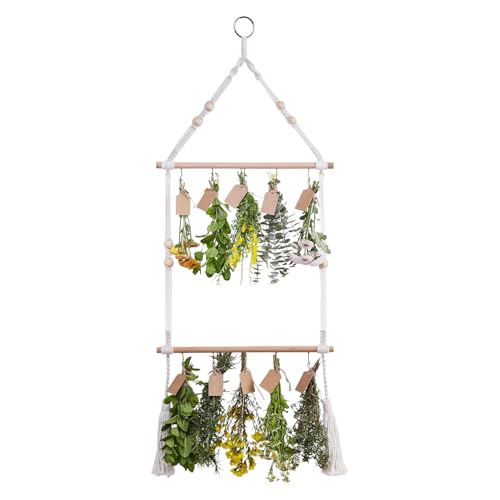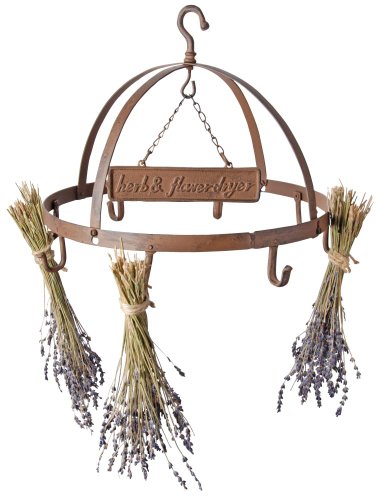What to do with a wreath after Christmas — 8 creative ways to preserve, reuse and recycle real wreaths
Wondering what to do with a fresh flower and foliage wreath after Christmas? Take a look at these ideas...
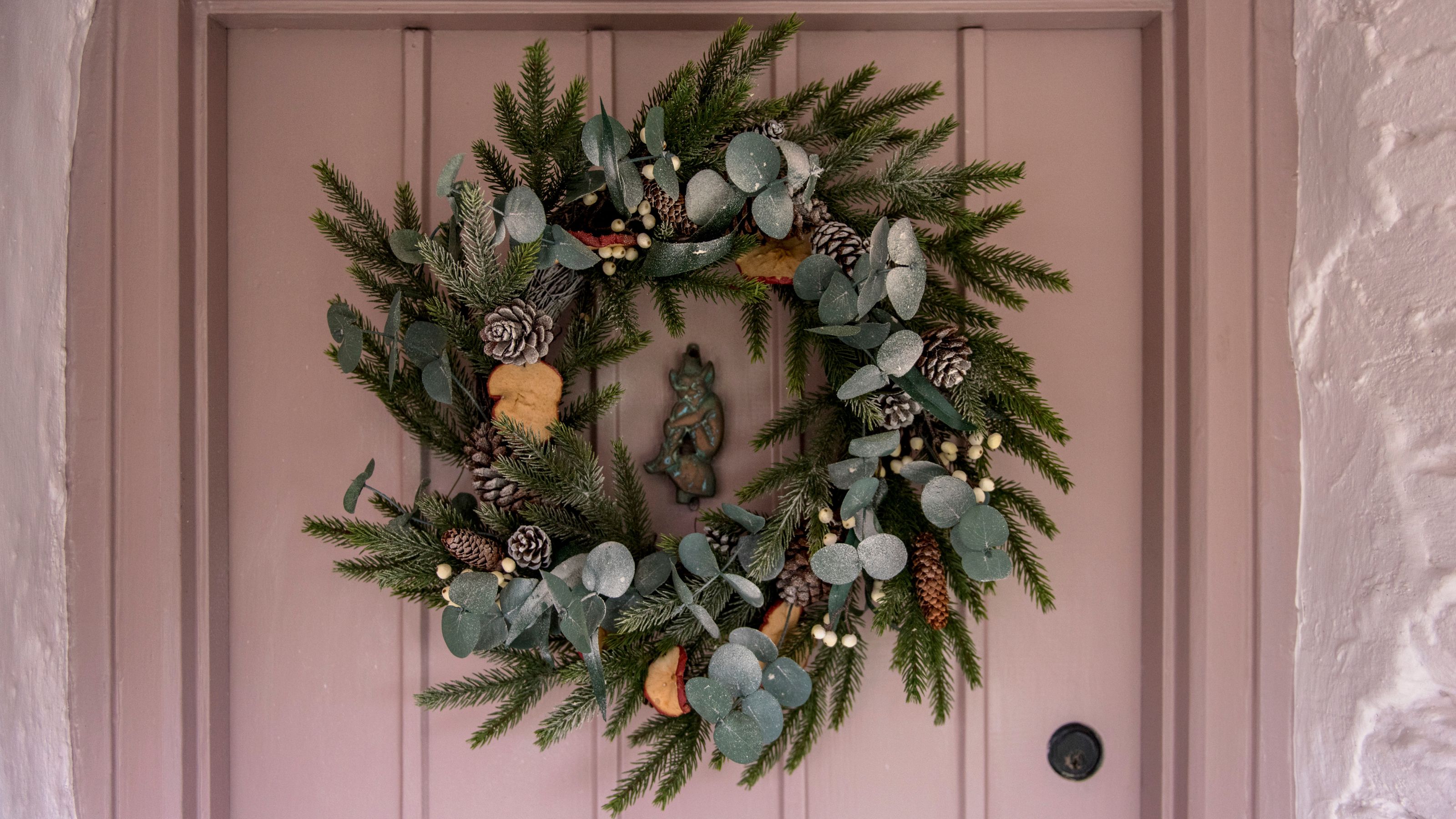

Wondering what to do with a wreath after Christmas? If you decided to buy or make a real wreath with flowers and foliage this year, there are plenty of creative ways to save or recycle it so it doesn't go to waste.
With the right know-how, all of those Christmas wreath ideas can survive another year. From making compost and mulching to repurposing the leaves and flowers around the house, there's plenty of room for creativity.
'There are so many ways to give your Christmas wreath a second life,' says Sarah McCaig, talented florist, colour-blending specialist and founder of Olive Owl. 'Don’t just toss it out! Christmas creates a lot of waste, so finding eco-friendly ways to reuse and recycle can make a big difference.'
If you went for a natural wreath this year and you're wondering what to do with a wreath after Christmas, here are eight of our favourite ideas.
1. Dry it out
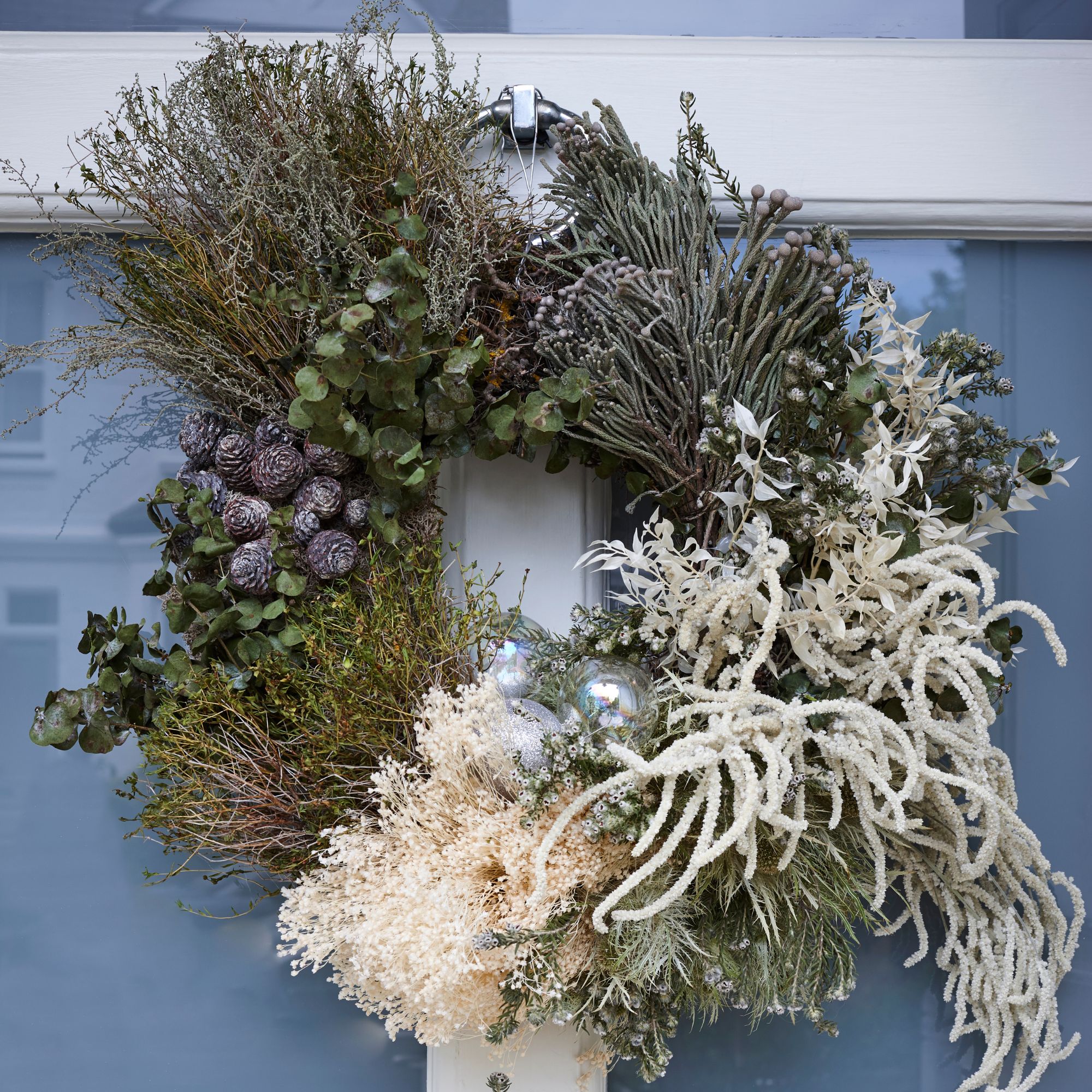
If your wreath is made of fresh flowers and foliage and you want to hang onto it for as long as possible, try preserving it by drying it out. Just remove any festive decorations like baubles and bows and you've got yourself a timeless wreath idea.
'Fresh floral wreaths are a beautiful way to decorate your home over the festive season, but they can also have a second life after Christmas, too,' says Gemma Gear, interior stylist and content creator for the Flower Council of Holland. 'If the flowers and greenery are still in good condition, you could dry them to preserve the flowers and create rustic, long-lasting decor for your home.
'Ensure you hang your wreath in a cool, dry spot in your home to allow the foliage to naturally preserve without it going mouldy!'
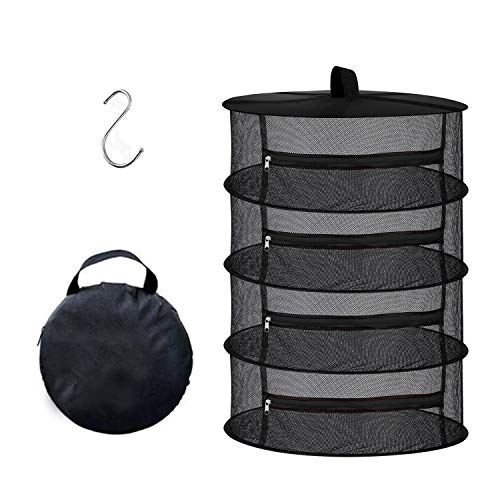
A hanging herb drying net to preserve the flowers and foliage from your wreath.
2. Preserve it with glycerine
You can also preserve a wreath using glycerine, according to gardening expert Graham Smith MCIHort from LBS Horticulture.
You might be familiar with the Christmas wreath glycerine hack if you were looking for ways to keep your Christmas wreath looking fresh throughout December.
'Glycerine will help the foliage within the wreath retain moisture, and in turn, this will keep the plants hydrated,' Graham explains. 'Mix a small amount of glycerine in warm water until it has dissolved.'
Warm water helps the foliage absorb the glycerine faster. Graham says you can also use a few drops of green food colouring to enhance the colour.

'Submerge the wreath in the glycerine solution for at least 24 to 48 hours, or up to a week for the best results,' he continues. 'Once the wreath has soaked, remove it from the solution and allow it to air dry on a flat surface. Cover the wreath with a tea towel, and ensure that it is kept somewhere with good ventilation to prevent mould growth.'
Just make sure you keep the wreath away from direct sunlight and hot spots like radiators to prevent it from fading or drying out. You can buy glycerine from Amazon and a range of supermarkets.
3. Redecorate it with the seasons
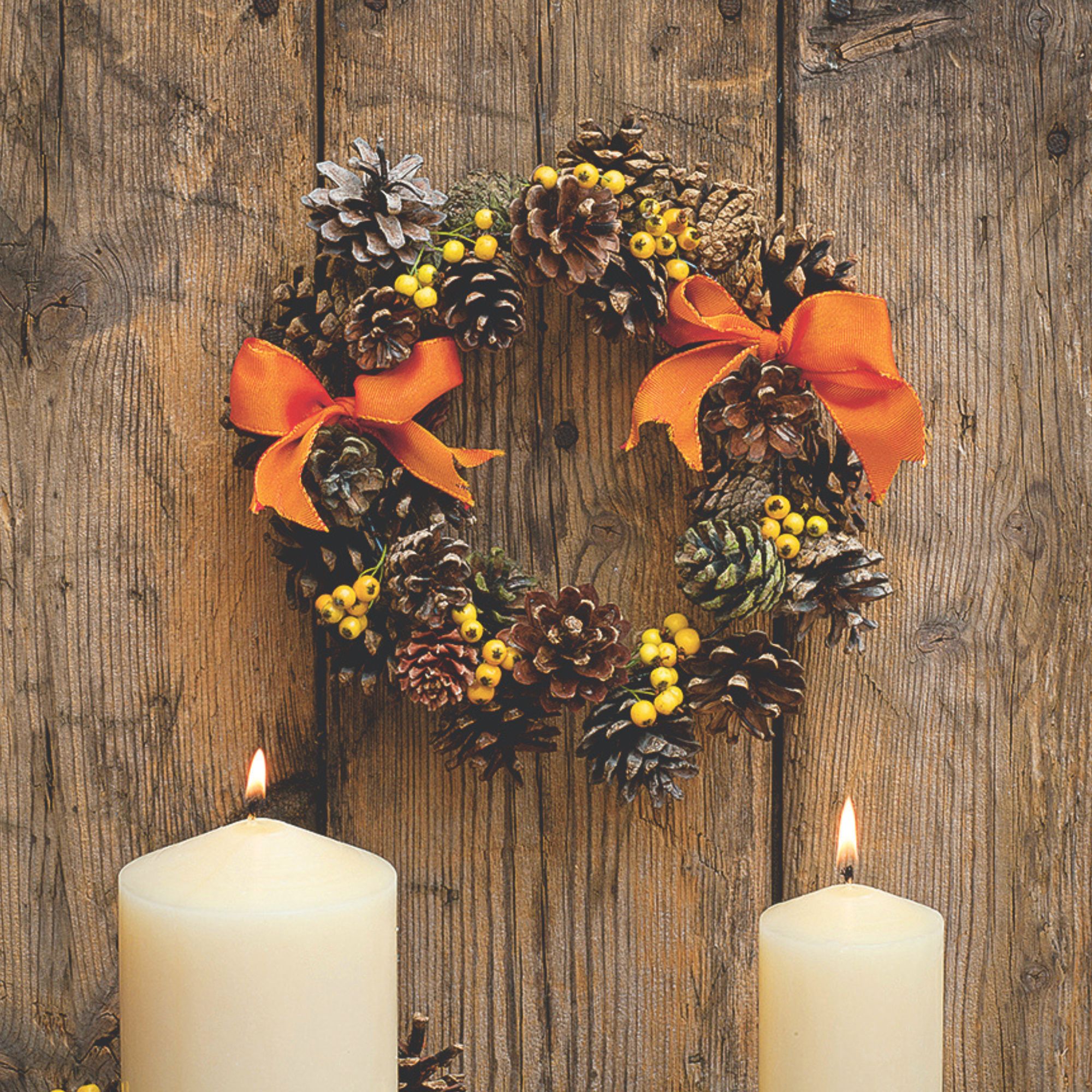
If you've decided to preserve your wreath and you're still wondering what to do with a wreath after Christmas, consider changing it up with the seasons. Autumn wreaths are becoming more popular every year, for example.
'All you need to do is switch the decorations from festive to autumn-themed,' says Sarah. 'Think small pumpkins, squash and orange or rust ribbons instead of your reds, golds or greens.
'Or, you can use it again the year after and just redecorate it and use it again next Christmas.'
4. Create a table centrepiece

If you haven't got the right spot for a wreath year-round, you can transform a natural wreath into a table centrepiece. It's perfect if you're looking for dining room table ideas or bedside table ideas.
'Another fab idea is to lay it flat on your dining table to create a table centrepiece and style it with nice candles or a decorative vase in the centre of the wreath,' explains Gemma.
Or, you could remove parts of the wreath for different arrangements. 'If you choose to disassemble your wreath, the foliage and flowers can be repurposed to create mini floral arrangements in smaller vases, which are perfect for bathrooms and bedside tables to add a hint of nature to your home,' Gemma says.

Gemma Gear is an interior stylist, shoot producer and content creator who specialises in home decor, DIY and plant-focused content. Known for her bold style and relatable storytelling, she engages her audience with authentic insights and stunning visuals. Gemma’s bubbly personality and unique approach makes her a standout in the influencer space. She’s also a content creator for the Flower Council of Holland, where she produces ongoing monthly content for the brand.
5. Use the sprigs as potpourri
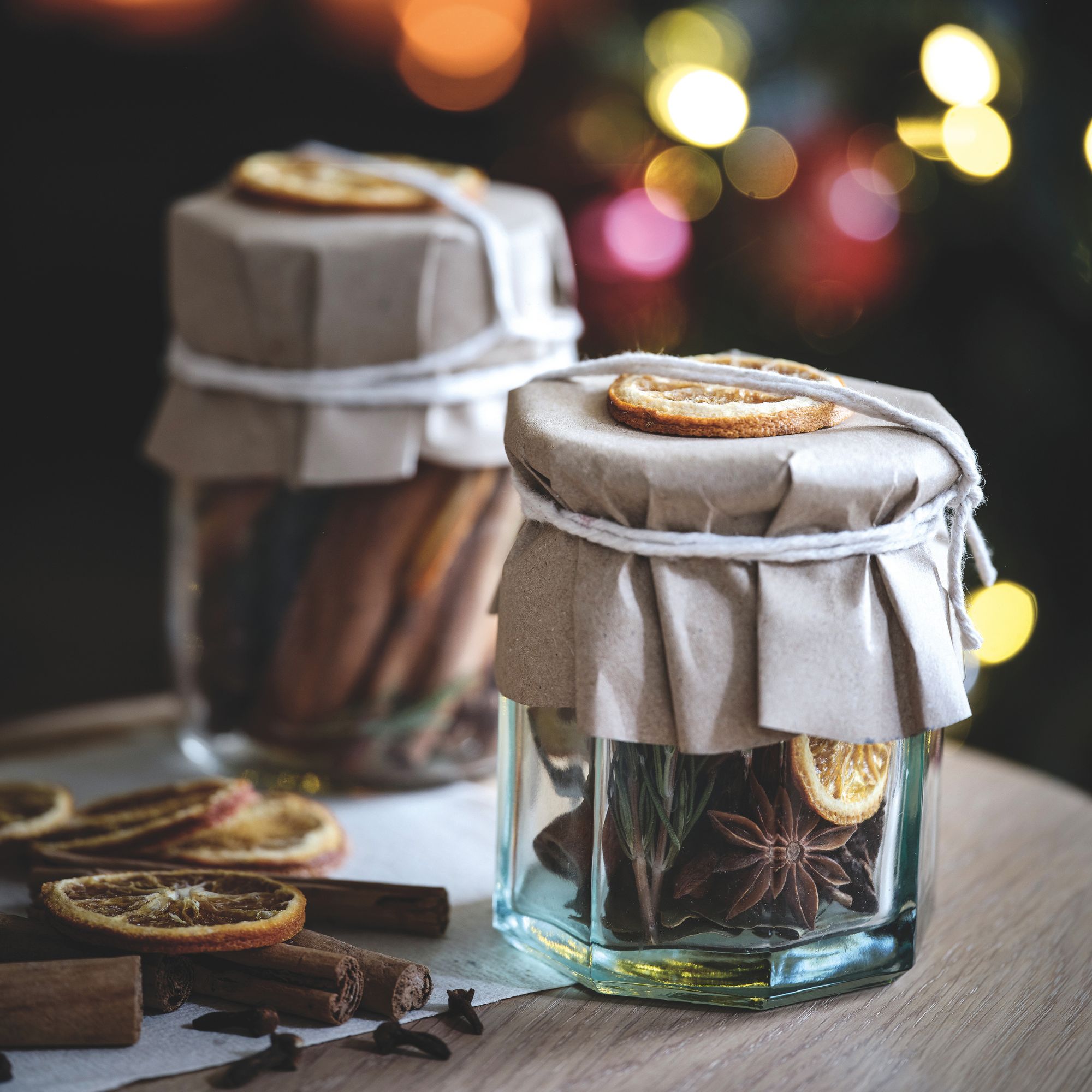
If you have a fresh floral wreath with scented flowers, turning it into potpourri is a brilliant idea. Plus, it's a safe and eco-friendly way to make your home smell good.
'If any flowers are still intact, drying them for potpourri is a lovely way to extend the floral scent around your home,' says Gemma.
'Or, you could try using them for pressed flower projects to create unique floral artwork that makes a lovely gift for loved ones.'
You can buy flower presses in a range of sizes, like this large flower press from Amazon.
6. Recycle thoughtfully
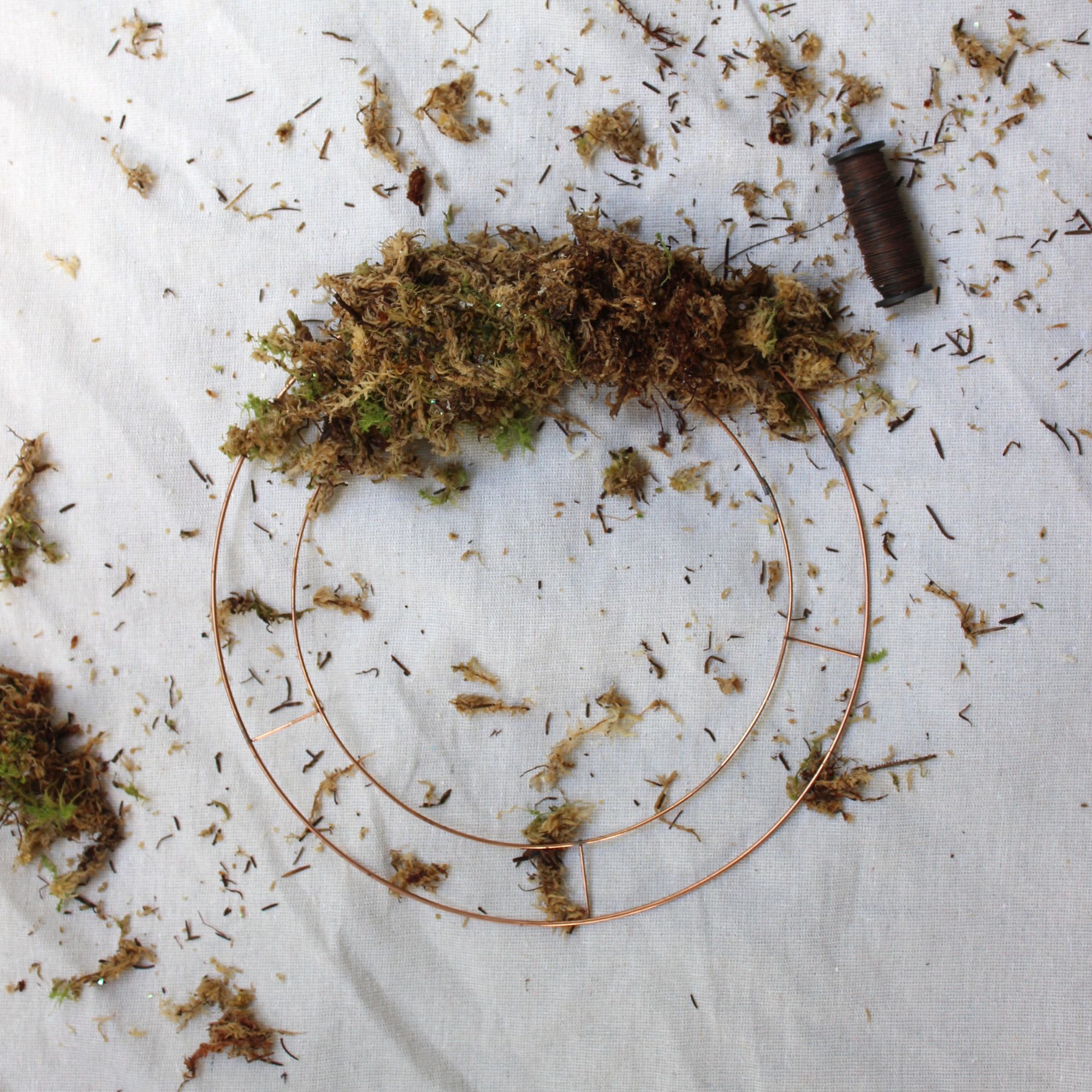
If you've decided it's time to get rid of your Christmas wreath, dismantle it first, and pay attention to which parts can be recycled.
'Many wreaths include a mix of materials – like fruit, baubles, and wire – which need to be separated for proper recycling,' says Sarah from Olive Owl.
Start by looking at the base. If it's floral foam (or Oasis), Sarah says it can't be recycled and needs to be added to general waste.
'If your wreath has a copper and moss base, separate them before recycling or reusing,' Sarah advises. Always check your local council's recycling guidelines, just to be sure.
If the base is made of straw, you've got the most eco-friendly option. 'This is what I use and it’s fully recyclable,' Sarah says. 'Or better yet, save it for next year’s wreath project if you enjoy annual wreath-making.'
Now, let's look at what you can do with the other plant-based elements of a Christmas wreath...
7. Compost it
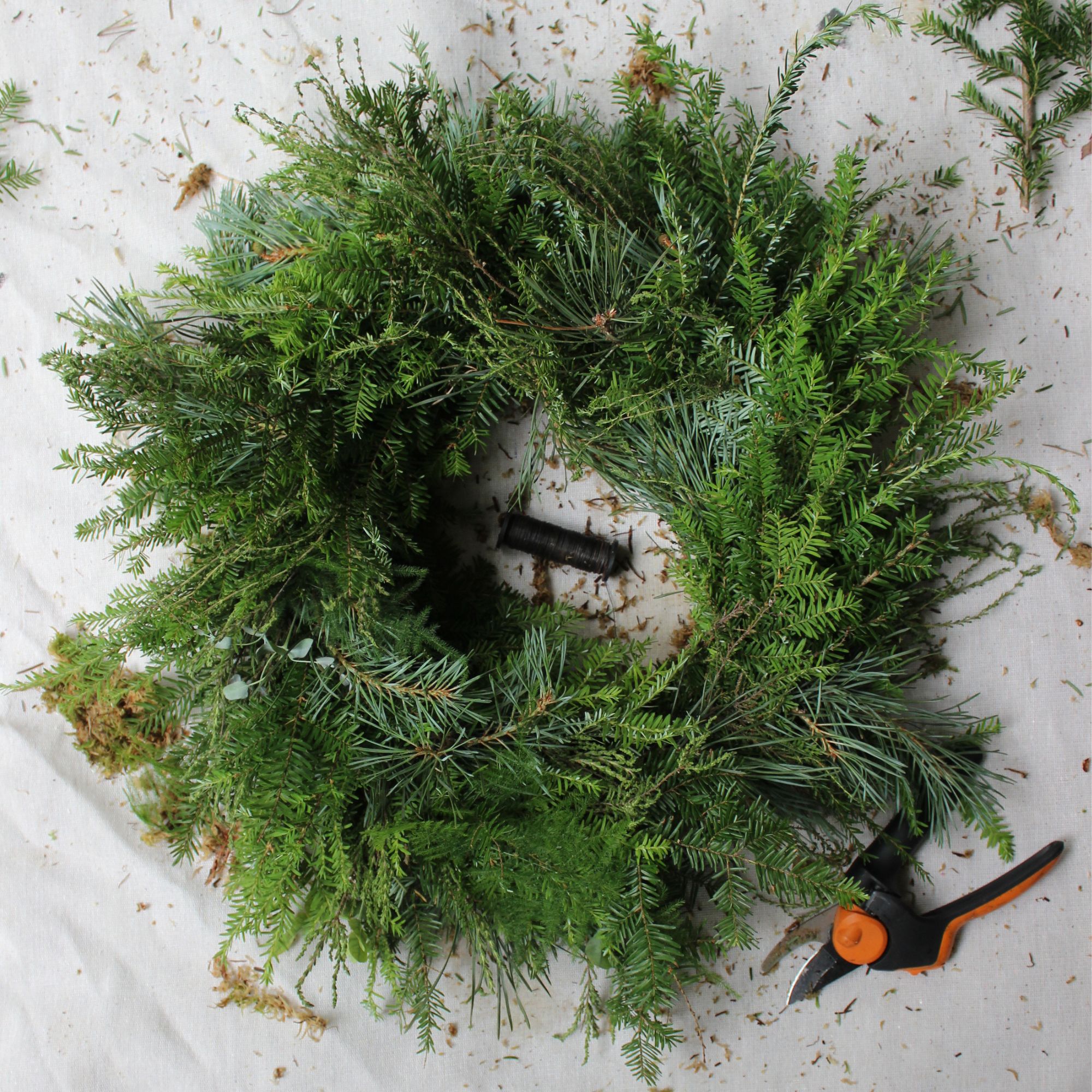
If you're wondering what to do with a wreath after Christmas and it's full of natural plant material, chances are, you can chuck it on the compost heap. You'll need to make sure it's free of festive non-biodegradables first, though, and avoid the things you should never put in a compost bin.
'Natural materials used on a Christmas wreath, such as ivy, pine cones, mistletoe and holly berries, can be composted provided that they are not covered in a lot of glitter,' says Graham.
'If you do not have your own compost bin, they can be placed in local garden or green waste collections instead.'
8. Turn it into mulch
Better still, a lot of natural wreath components can be used as garden mulch – so if you're wondering how to protect plants with mulch, now is the perfect time to practise.
'A wreath can be turned into mulch that you can use in your garden,' says Graham. 'Shred the needles and branches from the wreath, or strip the needles and sprinkle them in your garden.'
As with composting, make sure the foliage and branches are free from glitter and other artificial coating before using them in the garden.
FAQs
How long do you keep a Christmas wreath up?
It's all down to personal preference, but many people keep their Christmas wreath up until the beginning of January. Of course, if you follow the above tips for preserving your Christmas wreath, you could redecorate or repurpose it and keep it up year-round.
If you've been wondering what to do with a wreath after Christmas, there are plenty of options at your disposal, and many will benefit next year's garden.
Get the Ideal Home Newsletter
Sign up to our newsletter for style and decor inspiration, house makeovers, project advice and more.

Sophie joined the Ideal Home team as Gardens Editor in June 2024. After studying English at Royal Holloway, University of London, she began writing for Grow Your Own, which spurred on her love of gardening. She's tried growing almost every vegetable under the sun, and has a soft spot for roses and dinnerplate dahlias.
As Gardens Editor, Sophie's always on the lookout for the latest garden trend. She loves sharing growing hacks for every space, from herbaceous borders to balconies.
-
 Zoe Ball's colourful kitchen island shows how easy it is to create a characterful cooking space - here's how she did it
Zoe Ball's colourful kitchen island shows how easy it is to create a characterful cooking space - here's how she did itBeing brave with colour will reap huge rewards
By Holly Cockburn
-
 7 plants that will make your patio smell gorgeous - the top fragrant picks experts recommend potting up
7 plants that will make your patio smell gorgeous - the top fragrant picks experts recommend potting upFrom aromatic flowers to fragrant herbs
By Kayleigh Dray
-
 I won't gatekeep - Magimix's new small kitchen-friendly mini chopper is my secret to delicious lazy dinners
I won't gatekeep - Magimix's new small kitchen-friendly mini chopper is my secret to delicious lazy dinnersMy homemade pesto pasta has never been better
By Holly Cockburn
-
 George Home’s sold-out striped parasol is finally back in stock - but this elegant design is expected to sell out again fast
George Home’s sold-out striped parasol is finally back in stock - but this elegant design is expected to sell out again fastI can't get enough of its whimsical design, too
By Kezia Reynolds
-
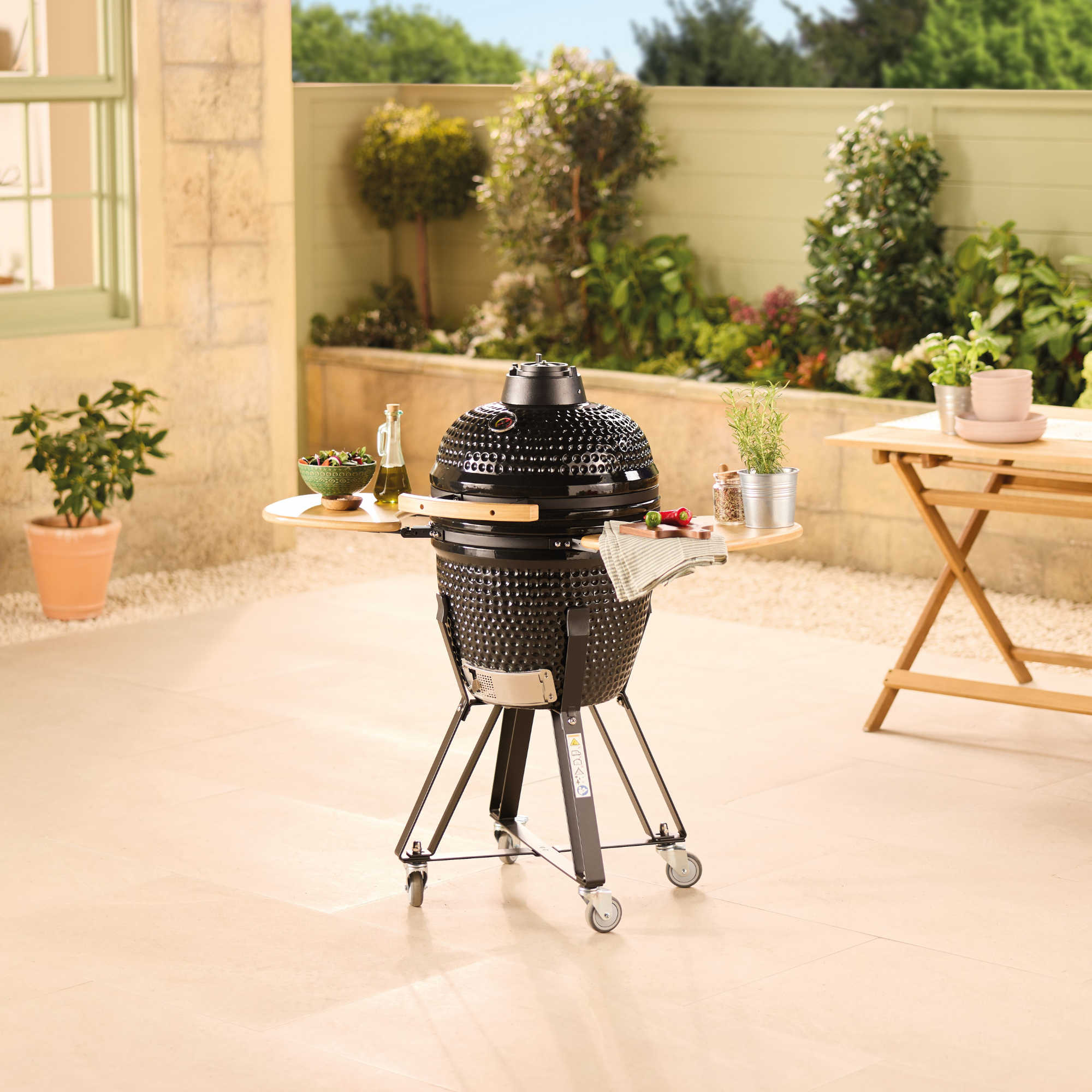 Aldi’s cult Kamado BBQ is returning to stores and it's £100 cheaper than before
Aldi’s cult Kamado BBQ is returning to stores and it's £100 cheaper than beforeThis budget BBQ is only a fraction of the price of this celebrity favourite
By Kezia Reynolds
-
 Shoppers can’t get enough of The Range’s lemon tree, but I’ve found an even cheaper bestseller at B&Q - it’s perfect for a Mediterranean look
Shoppers can’t get enough of The Range’s lemon tree, but I’ve found an even cheaper bestseller at B&Q - it’s perfect for a Mediterranean lookWelcome the summer with this glorious fruit tree
By Kezia Reynolds
-
 I'm a stylist with an eye for expensive-looking high street finds – these 6 garden furniture pieces at Dunelm are on my radar
I'm a stylist with an eye for expensive-looking high street finds – these 6 garden furniture pieces at Dunelm are on my radarThese pieces all look more than their price tag
By Laurie Davidson
-
 The 6 outdoor lights from Habitat that I'm choosing between to make my outdoor space look more expensive this summer
The 6 outdoor lights from Habitat that I'm choosing between to make my outdoor space look more expensive this summerI couldn’t believe some of the prices
By Ellis Cochrane
-
 Aldi is launching a £200 day bed with four different features - its sleek design is suited to the whole family
Aldi is launching a £200 day bed with four different features - its sleek design is suited to the whole familyYou don't want to miss out on this Specialbuy
By Kezia Reynolds
-
 I’m seeing pastel garden furniture at all my favourite brands this spring, but QVC’s sorbet collection impressed me the most
I’m seeing pastel garden furniture at all my favourite brands this spring, but QVC’s sorbet collection impressed me the mostFresh pastel shades are a great way to liven up your outdoor space
By Kezia Reynolds
-
 I spent the afternoon looking through Wayfair's garden sale – these are the 6 pieces I'm buying immediately for summer
I spent the afternoon looking through Wayfair's garden sale – these are the 6 pieces I'm buying immediately for summerThese are my must-have garden buys from the sale
By Holly Reaney
